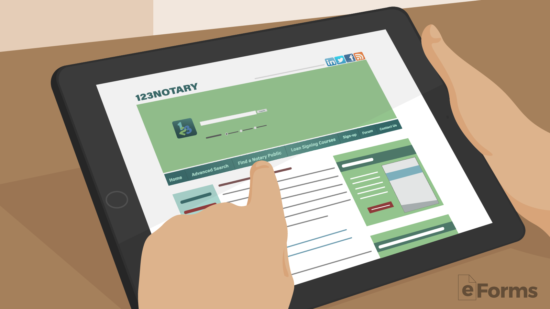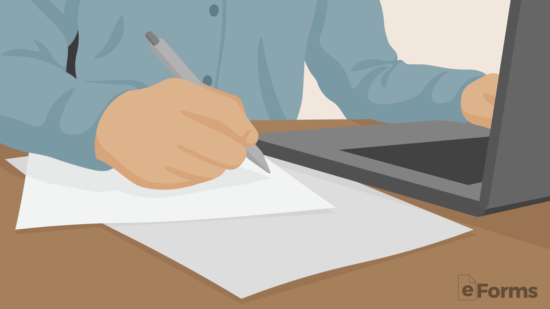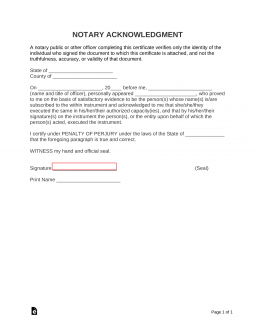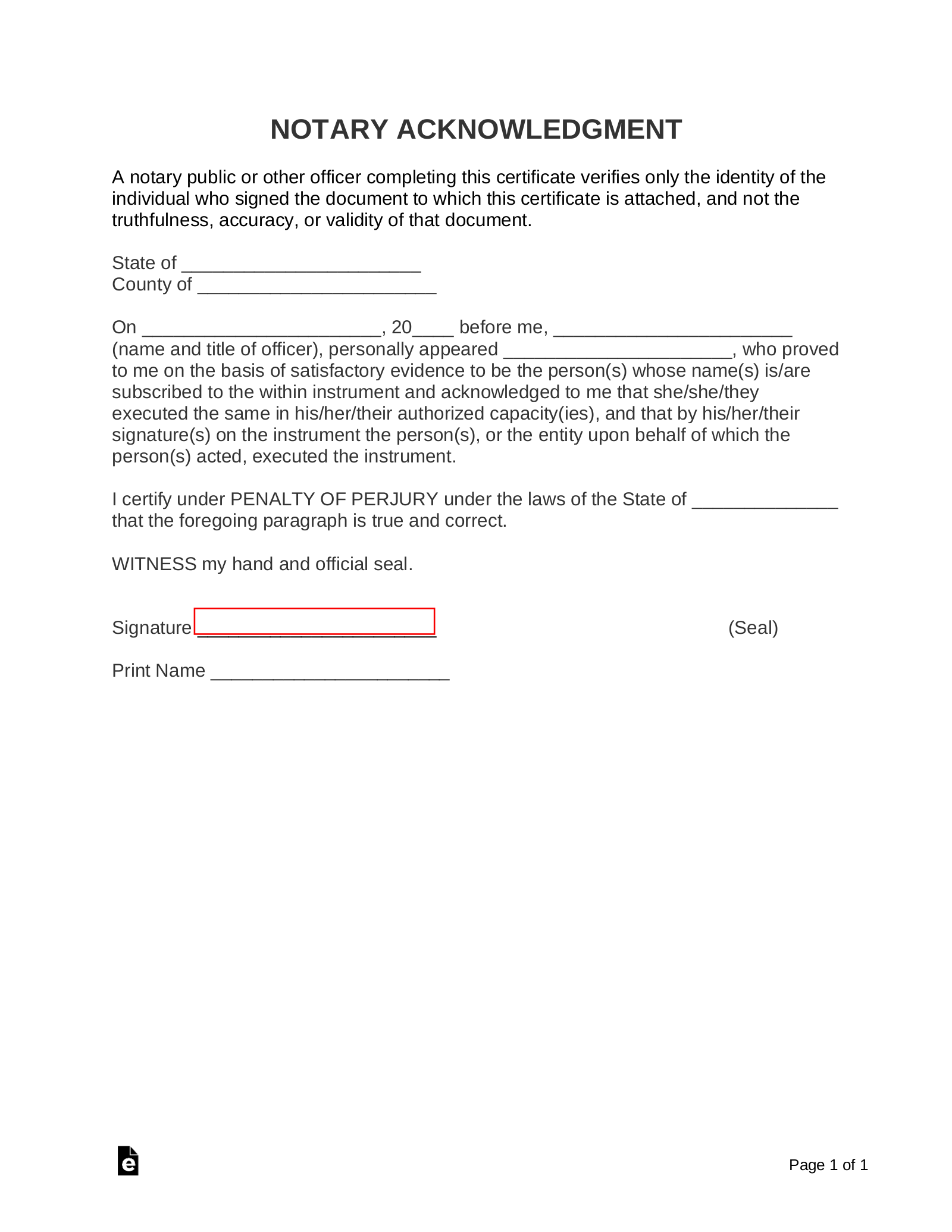Updated February 01, 2024
A notary acknowledgment is a sworn statement by a notary public who witnesses a person sign a document. Per state law, the notary public must view government-issued photo identification to prove the signer is the authorized party.
A notary acknowledgment is highly recommended for all important legal documents and is often required for most estate forms (e.g., power of attorney, last will and testaments, etc.).
By State
- Alabama
- Alaska
- Arizona
- Arkansas
- California
- Colorado
- Connecticut
- Delaware
- Florida
- Georgia
- Hawaii
- Idaho
- Illinois
- Indiana
- Iowa
- Kansas
- Kentucky
- Louisiana
- Maine
- Maryland
- Massachusetts
- Michigan
- Minnesota
- Mississippi
- Missouri
- Montana
- Nebraska
- Nevada
- New Hampshire
- New Jersey
- New Mexico
- New York
- North Carolina
- North Dakota
- Ohio
- Oklahoma
- Oregon
- Pennsylvania
- Rhode Island
- South Carolina
- South Dakota
- Tennessee
- Texas
- Utah
- Vermont
- Virginia
- Washington
- Washington D.C.
- West Virginia
- Wisconsin
- Wyoming
Table of Contents |
What is a Notary Public?
A notary public is an individual who sears an oath to officially recognize signatures. In most states, a notary holds their position for four years with a small fee, usually around $100, to renew, plus costs for updated stamps.
How to Find a Notary Public (in-person)
A notary public can be found at every branch bank or a UPS Store and financial institution in the United States. If neither is in your area, use NotaryRotary.com to find available notaries in your area.
Signature Types
Corporation / LLC – If an officer or member of an entity is to sign on behalf of their behalf, there needs to be this language included for legal purposes.
Individuals – Standard form where a person signs and shows proper identification to prove that he or she authorized the document.
Jurat – A person who must take an oath or swear to an affidavit before a notary public.
Partnerships – This specific type of entity requires to be mentioned that it is a partnership and which type (e.g., LP, LLP, LLLP, etc.)
How to Notarize a Document (4 steps)
3. Find a Notary Public

- In-Person (*free) – Most financial institutions will conduct a notarization as a free service (*if you have an account). If you do not have an account, a person can go to Bank of America, Chase Bank, TD Bank, or any large chain, and they will usually conduct the notarization for a fee (typically $25).
- In-Person (paid) – Otherwise, you can go to a UPS Store or find a local Notary Public using an online directory such as notaryrotary.com, 123notary.com, or the American Association of Notaries.
- Online (paid) – If the form can be signed online with a notary public, then Notarize.com, eSign.com, or NotaryCam.com may be used.
4. Distribute Original Copies
 It is recommended that all persons involved in the document that was notarized are issued an original copy with the seal of acknowledgment. This will verify that each person possesses an authorized copy of the form if it is violated or needs to be shown to a third party.
It is recommended that all persons involved in the document that was notarized are issued an original copy with the seal of acknowledgment. This will verify that each person possesses an authorized copy of the form if it is violated or needs to be shown to a third party.
Sample
NOTARY ACKNOWLEDGMENT
A notary public or other officer completing this certificate verifies only the identity of the individual who signed the document to which this certificate is attached and not the truthfulness, accuracy, or validity of that document.
State of [STATE]
County of [COUNTY]
On [DATE], 20[YEAR] before me, [OFFICER NAME/TITLE], personally appeared [NAME], who proved to me based on satisfactory evidence to be the person(s) whose name(s) is/are subscribed to the within the instrument and acknowledged to me that she/she/they executed the same in his/her/their authorized capacity(ies), and that by his/her/their signature(s) on the instrument the person(s), or the entity upon behalf of which the person(s) acted, executed the instrument.
I certify under PENALTY OF PERJURY under the laws of the State of [STATE] that the foregoing paragraph is true and correct.
WITNESS my hand and official seal.
Signature: _______________________ (Seal)
Print Name: _______________________



 All the parties must be present. In addition, all signing individuals must be of legal age (18 years old) and carry government-issued identification. Otherwise, the notary will not be able to verify the identity of the individuals, and you will have to come back.
All the parties must be present. In addition, all signing individuals must be of legal age (18 years old) and carry government-issued identification. Otherwise, the notary will not be able to verify the identity of the individuals, and you will have to come back.